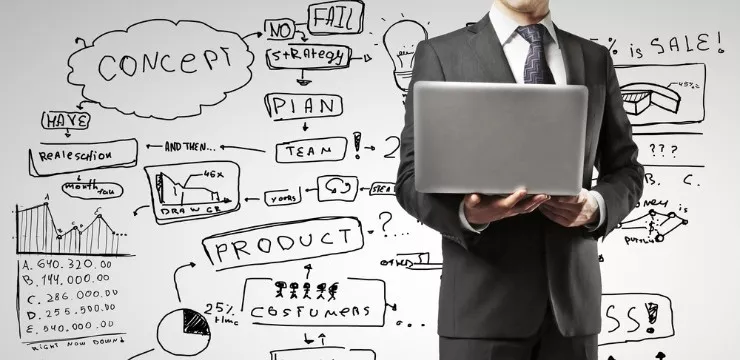
What is an organizational transformation model? And how do businesses benefit from them?
Below, we will look at organizational transformation models in detail, including:
- What they are
- How they help organizations transform
- Different models of organizational change and transformation
Among other things.
To start with, let’s understand what these models are and how they are used:
What Is an Organizational Transformation Model?
An organizational transformation model provides a high-level overview of organizational transformations.
Change management models, for instance, model organizational changes and transformations – with a focus on individual employees.
These frameworks tend to focus on areas such as:
- Group dynamics and the role of employees in organizational change
- How to motivate and engage employees
- Overcoming common roadblocks to change, such as employee resistance
Today, most organizational change models are more than just theories. They are practical roadmaps designed to be applied in the real world.
Why Use an Organizational Transformation Model?
Models of organizational transformation and change offer a number of benefits to businesses and managers.
These include:
- A deeper understanding of how employees and groups respond to organizational changes
- A step-by-step approach to initiating and managing organizational change projects
- Tactics for mitigating risk, overcoming obstacles, and improving project results
As we will see below, there are a number of models used in change management.
However, most of them share the same underlying premises and methods.
How Change Management Affects Organizational Transformation
Change management is the business discipline specifically devoted to managing organizational transformation and change.
Their role is to:
- Assess problems and design solutions. Organizational transformations are typically designed to solve a problem. For instance, a business that produces obsolete IT hardware may have to pivot its entire business model … or risk going out of business. Avoiding this hazard would certainly involve a significant organizational transformation.
- Oversee and manage change projects. Change managers are responsible for guiding change projects, allocating resources, coordinating among the various stakeholders, and managing other aspects of a change project.
- Maximize efficiency and project results. Also, change managers and their teams will do everything possible to reduce waste and maximize project returns. As we will see below, project outcomes often depend heavily on how employees respond to a change – and how well the change team manages those employees.
- Mitigate risks and overcome barriers to change. There are many common barriers to organizational change and transformation. A few examples include employee resistance, budget constraints, and lack of executive support.
Change managers rely on change management frameworks and models to get the best results from any organizational transformation project.
Examples of Organizational Transformation Models
As mentioned, organizational change models tend to be practical roadmaps – not abstract theories.
That is, they are designed as tools that can be easily understood and applied.
One example of an organizational change model is Prosci’s ADKAR framework.
Its five stages revolve around five core elements:
- Awareness of the business reasons for change
- Desire to engage and participate in the change
- Providing the necessary knowledge on how to change
- Ability to implement and initiate the change
- Reinforcement of the change, to ensure it stays permanent
John Kotter’s 8-Step Model for Leading Change also focuses on employees as a vehicle for change.
Its steps include:
- Creating a sense of urgency
- Building a guiding coalition
- Form a strategic vision and initiatives
- Enlist a volunteer army
- Enable action by removing barriers
- Generate short-term wins
- Sustain acceleration
- Institute change
Many of today’s most prominent change models are based on the work of Kurt Lewin.
He is considered by many to be a forefather of the discipline of change management and organizational development.
His change model contained three stages:
- Unfreeze – Dissolving old habits, workflows, processes, procedures, or anything else that needs to be changed.
- Transition – The period of uncertainty between the old status quo and the new norm, when employees learn new skills, habits, and ways of thinking.
- Freeze – Reinforcing the organizational change, in order to ensure that employees don’t revert back to old habits and processes.
There are certainly other models of organizational change, but these are among the most popular.
Which Model Is Best?
Certain models may perform better than others.
When evaluating organizational transformation models, businesses should consider:
- Which approach best suits their organization and their culture
- The underlying methodology and principles of a model
- The track record of a model’s proponents, if applicable
However, what is most important is to actually use a model.
Organizational transformations are most successful when they are:
- Approached systematically and strategically
- Sophisticated
- Well-structured
- Managed, led, and executed effectively
The more advanced the change management approach, the better the results will be. But in order to maximize the results of any project, businesses must actually follow and execute that model.
In other words, choosing an effective organizational transformation model is just as important as effective management and execution.
WalkMe Team
WalkMe spearheaded the Digital Adoption Platform (DAP) for associations to use the maximum capacity of their advanced resources. Utilizing man-made consciousness, AI, and context-oriented direction, WalkMe adds a powerful UI layer to raise the computerized proficiency, everything being equal.



